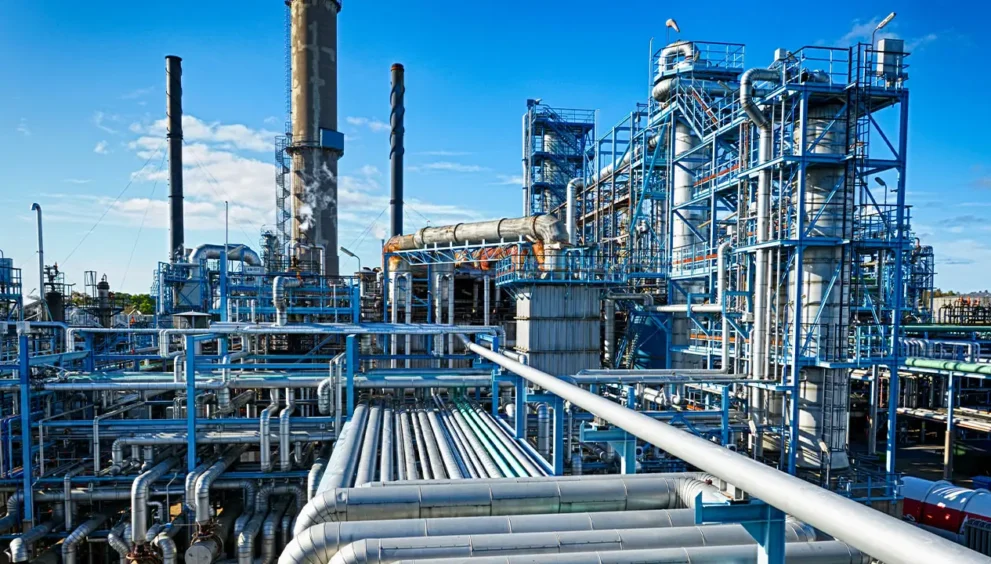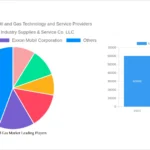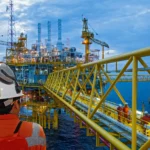Oil and Gas Market Trends: Supply Surge, Price Volatility, and Green Investments Shape 2025

Oil and Gas Market Trends: Supply Surge, Price Volatility, and Green Investments Shape 2025
Houston, USA
The oil and gas industry is witnessing significant market trends in 2025, driven by a looming supply surplus, fluctuating prices, and a growing emphasis on sustainable practices. As global energy demand evolves, key trends in production, exports, and technological innovation are reshaping the sector. Here’s an in-depth look at the forces driving the oil and gas market this year.
Oversupply Pressures Oil Prices
A projected oil surplus is dominating market trends, with global production expected to hit 105.8 million barrels per day (b/d) in 2025, according to the International Energy Agency. OPEC+’s decision to increase output by 548,000 b/d since August 2025, combined with strong non-OPEC supply growth from the U.S., Brazil, and Canada, is set to create a 1.7 million b/d surplus by early 2026. This oversupply is pushing Brent crude prices downward, with forecasts indicating a drop from $68 per barrel in August 2025 to around $50 per barrel in Q1 2026. Weakening demand in China, where economic growth slowed to 4.6% in Q2 2025, is further exacerbating price volatility.
LNG Export Boom Faces Demand Uncertainty
The global LNG market is experiencing a surge in supply, led by the U.S., which is on track to increase export capacity by 53% (6.0 billion cubic feet per day) by the end of 2026. New facilities, such as Venture Global’s Plaquemines LNG plant, are driving this growth, fueled by demand from Asia and Europe. However, global LNG demand is expected to peak in 2025 at 425 billion cubic meters before declining slightly through 2030, particularly in emerging Asian markets facing infrastructure and economic challenges. Europe’s 23.6% increase in LNG imports in the first half of 2025 reflects efforts to diversify away from Russian gas, but the EU’s planned halt of Russian LNG re-exports in March 2025 could tighten supplies and influence prices.
Geopolitical Risks Amplify Market Volatility
Geopolitical tensions are a key driver of market uncertainty. Ukrainian drone strikes on Russian refineries have disrupted 1.2 million b/d of capacity in 2025, contributing to temporary price spikes. U.S. tariffs on India’s imports of Russian oil and calls for stricter NATO sanctions on Russian energy exports are creating trade frictions, impacting global supply chains. The Strait of Hormuz, which handles 21% of global petroleum liquids, remains a flashpoint, with potential disruptions threatening market stability. These factors are keeping investors cautious as they navigate short-term price fluctuations.
Energy Transition Spurs Green Investments
The push for sustainability is a defining trend, with oil and gas companies investing heavily in low-carbon technologies. Carbon capture, utilization, and storage (CCUS) projects are scaling up, with North America and the Middle East leading the way. For example, ExxonMobil’s LaBarge facility in Wyoming is capturing 8 million metric tons of CO2 annually, with plans for expansion by 2027. Natural gas is gaining traction as a transitional fuel, with global demand projected to rise 1.7% in 2025, driven by coal-to-gas switching in Asia. Renewable energy integration, such as solar-powered LNG facilities, is also growing, with Cheniere Energy’s Corpus Christi plant incorporating 50 MW of solar capacity in 2025.
Petrochemical Demand Fuels Growth
Petrochemicals are a bright spot in the market, expected to drive 18–20% of global oil demand by 2040. Natural gas liquids (NGLs) are in high demand for petrochemical feedstocks, particularly in Asia and the Middle East, where new refining and chemical plants are under construction. However, challenges such as South Korea’s petrochemical sector debt crisis and supply chain disruptions are creating headwinds. Companies are leveraging AI and digital twins to optimize operations, with Saudi Aramco reporting a 10% reduction in refining costs through digitalization in 2024.
Regional Production Trends
Regional developments are shaping market dynamics. Brazil’s pre-salt fields have boosted production to 3.5 million b/d, making it a key OPEC+ player. Egypt’s oil and gas output has surged in 2025, supported by $121 million in new exploration agreements. In the Middle East, the UAE’s ADNOC is targeting 5 million b/d by 2027, while also investing in hydrogen and renewables. Angola’s offshore projects have added 60,000 b/d, contributing to Africa’s growing role in global supply. These regional trends are critical as BRICS+ nations, including new members like Iran, strengthen their influence in energy markets.
Mergers and Cost-Cutting Reflect Market Pressures
Market consolidation is accelerating, with 75% of U.S. oil and gas companies planning mergers and acquisitions in 2025 to enhance efficiency and access new technologies. Layoffs continue as firms like BP and ConocoPhillips cut jobs to manage costs amid lower oil prices. Capital discipline remains a priority, with the industry distributing $213 billion in dividends and $136 billion in share buybacks in 2024, signaling a focus on financial resilience.
Outlook for 2025
The oil and gas market in 2025 is defined by a delicate balance between supply growth, geopolitical risks, and the energy transition. While oversupply and demand uncertainties challenge price stability, investments in green technologies and petrochemicals offer growth opportunities. As companies navigate these trends, strategic adaptability will be key to thriving in a dynamic global energy landscape.







